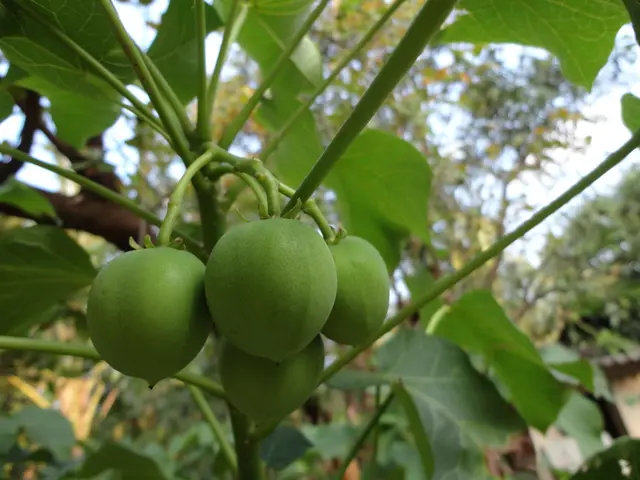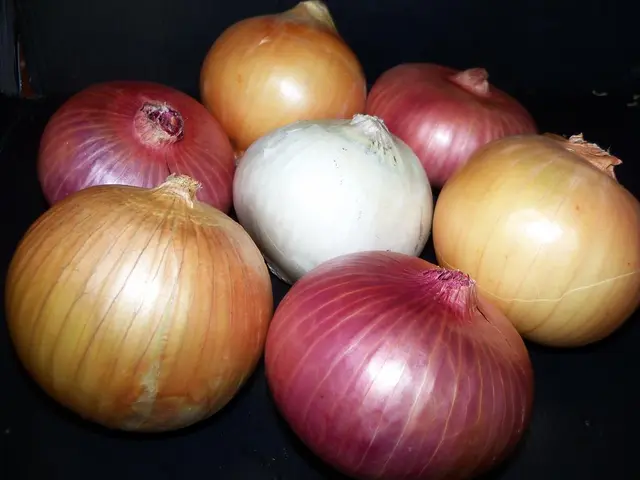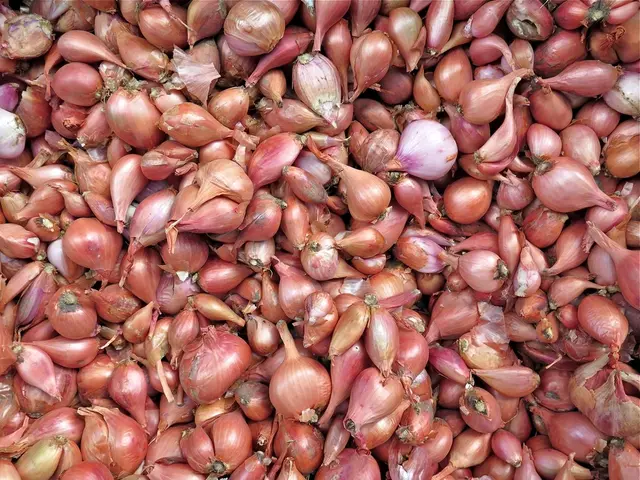Varieties of Soil Suitable for Thriving Vegetable Gardens
In the heart of every thriving vegetable garden lies a well-prepared soil bed that caters to the specific needs of the plants. Understanding the best soil types for various vegetables and how to prepare them is key to a bountiful harvest.
Clay soil, though sticky and challenging to dig, is a treasure trove of nutrients for leafy greens and root vegetables. Its ability to hold water makes it an ideal candidate with proper water management. Dark-coloured soil often indicates the presence of organic matter, a vital component for plant growth. However, clay soil can be too heavy and dense, making it difficult for roots to spread and water to drain. To counter this, adding sand, gravel, or organic matter like compost can improve drainage and loosen the soil.
On the other hand, sandy soil, with its gritty texture and loose structure, drains quickly but may lack essential nutrients. To address this, incorporating compost or organic matter can improve water and nutrient retention.
Loamy soil, a mixture of sand, silt, and clay, is considered the ideal growing medium for plants. It provides good drainage, retains moisture, and has a balanced nutrient profile, making it the go-to choice for most root vegetables and a variety of vegetables.
Soil pH is crucial for optimal vegetable growth. Most vegetables prefer a slightly acidic to neutral pH of about 6.0 to 7.0, which optimizes nutrient availability. Some exceptions include blueberries, which need more acidic soil (pH 4.5-5.5), and asparagus, which prefers slightly alkaline soil (pH 7.0-8.0).
To prepare your soil for optimal vegetable growth, start by testing your soil type and pH. This can be done by squeezing moist soil samples and using inexpensive test strips. Based on the results, improve soil texture by adding organic matter or amendments like sand or gypsum to balance out the soil types.
Next, add organic matter and nutrients to your soil. Mixing in plenty of compost and slow-release fertilizers can enhance nutrient content and support beneficial microorganisms. Remove weeds, rocks, and other contaminants to allow roots to penetrate freely. Check drainage by testing water retention, and adjust if necessary by amending soil or using raised beds to prevent waterlogging.
By following these steps, you can create an ideal growing environment tailored to your vegetable garden's needs, promoting healthy root development and vigorous plant growth. The colour, texture, and smell of soil can indicate its health and fertility. A sour scent may indicate poor drainage, a fishy smell suggests the presence of fungus, and a musky scent could be attributed to a mix of plants, compost usage, or specific types of soil like grey soil.
In conclusion, understanding the characteristics of different soil types and adjusting them to suit your vegetable garden's requirements is essential for a successful yield. Loamy soil, with its well-balanced properties, is widely regarded as the best soil for growing vegetables, but other soil types can be amended to provide an optimal growing environment for various vegetables. Happy gardening!
Vegetable gardening is not just about selecting the right plants, but also understanding the science behind soil types to ensure a bountiful harvest. For instance, sandy soil can benefit from the addition of organic matter for better water and nutrient retention, while clay soil can be improved with sand, gravel, or compost to enhance drainage and loosen the soil. Loamy soil, being a mixture of sand, silt, and clay, is considered ideal for most root vegetables and a variety of vegetables due to its balanced properties. Therefore, soil preparation and maintenance are integral parts of home-and-garden lifestyle and gardening, contributing to a thriving vegetable garden and contributing to a healthier lifestyle.








